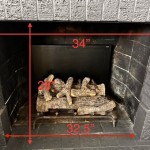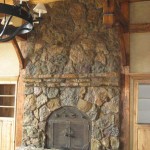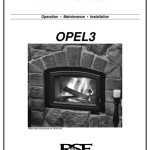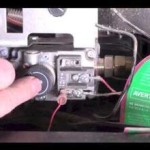Understanding the Gas Fireplace Starter Pipe: A Comprehensive Guide
A gas fireplace offers a convenient and aesthetically pleasing alternative to traditional wood-burning fireplaces. One critical component in the successful operation of a gas fireplace is the starter pipe. This article provides a comprehensive overview of the gas fireplace starter pipe, detailing its function, types, installation considerations, potential issues, and maintenance.
The starter pipe, also often referred to as a burner pipe, serves as the conduit through which natural gas or propane is delivered to the fireplace's burner. Its primary function is to facilitate ignition and maintain a consistent flame across the burner element. It plays a crucial role in ensuring the gas fireplace operates safely and efficiently, providing consistent heat output and a visually appealing flame display.
The selection and maintenance of the starter pipe are essential aspects of ensuring the longevity and optimal performance of a gas fireplace system. Understanding the nuances associated with this component can empower homeowners and technicians alike to effectively troubleshoot problems and ensure safe operation.
Types of Gas Fireplace Starter Pipes
Gas fireplace starter pipes come in various configurations and materials, each designed to suit specific fireplace designs and fuel types. Common materials used include black iron, stainless steel, and copper. The choice of material depends on factors such as heat resistance, corrosion resistance, and compatibility with the specific type of gas being used.
The diameter and length of the starter pipe are also important variables. The diameter must be appropriately sized to deliver the required gas flow rate for the burner. An undersized pipe can restrict gas flow, leading to a weak or unstable flame. Conversely, an oversized pipe might result in inefficient gas usage. The length of the pipe is dictated by the placement of the gas supply line relative to the burner assembly.
Several designs cater to different ignition systems. Some starter pipes are simple, straight tubes with drilled orifices, while others incorporate more complex designs with bends, nozzles, or diffusers. The design is specifically tailored to the ignition method, be it a pilot light, electronic ignition, or standing pilot system. For instance, systems with electronic ignition commonly use starter pipes with precisely calibrated orifices to ensure reliable ignition with minimal gas usage.
Installation and Placement Considerations
Proper installation of the starter pipe is paramount to the safe and efficient operation of the gas fireplace. Installation should always be performed by a qualified technician adhering to local building codes and manufacturer specifications. Incorrect installation can lead to gas leaks, incomplete combustion, and potentially dangerous situations.
Before installation, it is imperative to ensure the gas supply has been shut off. All connections must be made using appropriate gas-rated Teflon tape or pipe dope to create a secure and leak-proof seal. The starter pipe should be securely mounted and supported to prevent movement or vibration, which can lead to leaks or damage.
The placement of the starter pipe relative to the burner is critical. The orifices or nozzles on the pipe must be accurately aligned to deliver the gas directly to the burner ports. Incorrect alignment can result in uneven flame distribution, incomplete combustion, and the accumulation of soot. Adequate clearance should be maintained around the starter pipe to prevent overheating and potential damage to surrounding components.
Troubleshooting Common Issues
Several issues can arise with gas fireplace starter pipes, impacting the performance and safety of the fireplace. Common problems include clogged orifices, gas leaks, corrosion, and damage due to overheating or physical impact.
Clogged orifices can restrict gas flow, leading to a weak or sputtering flame. This can often be resolved by carefully cleaning the orifices with a specialized orifice cleaning kit or a small wire. Gas leaks can be detected by applying a soap and water solution to the connections and observing for bubbles. Any leaks should be addressed immediately by a qualified technician.
Corrosion can weaken the starter pipe, potentially leading to leaks or failure. Regular inspection and cleaning can help prevent corrosion. Damaged starter pipes should be replaced immediately to prevent hazardous situations. When replacing a starter pipe, it is essential to use a component that is specifically designed and approved for use with the fireplace model and fuel type.
Inconsistent flame patterns or difficulties with ignition can frequently be traced back to issues with the starter pipe. A flickering flame or a flame that repeatedly ignites and extinguishes may indicate a problem with the gas pressure, the regulator, or the starter pipe itself.
Furthermore, the presence of soot or a strong odor of gas, even a faint one, should be cause for immediate concern. These symptoms may point to incomplete combustion, often caused by a malfunctioning or improperly adjusted starter pipe. If such symptoms are observed, the fireplace should be shut down immediately, and a qualified technician should be contacted to assess and rectify the situation.
The careful attention to the details of the gas fireplace starter pipe, its proper installation, regular maintenance, and diligent troubleshooting can ensure the safe and efficient operation of a gas fireplace, providing both warmth and aesthetic enjoyment for years to come.

Log Lighters Gas Starter Pipes Steel Cast Iron

How To Install A Log Lighter Fireplace Gas Starter Pipe
.png?strip=all)
How To Install A Log Lighter Fireplace Gas Starter Pipe

Dante Stainless Steel Gas Fireplace Log Lighter Burner Pipe With T Mixer
Is A Gas Log Lighter Dangerous

How To Install A Log Lighter Fireplace Gas Starter Pipe

How To Install A Log Lighter Fireplace Gas Starter Pipe

Flexible Appliance Connector In Fireplace Plumbing Inspections Internachi Forum

Gas Starters In Fireplaces And Safety Hunker

How To Fix A Blocked Gas Fireplace








